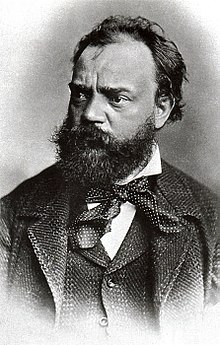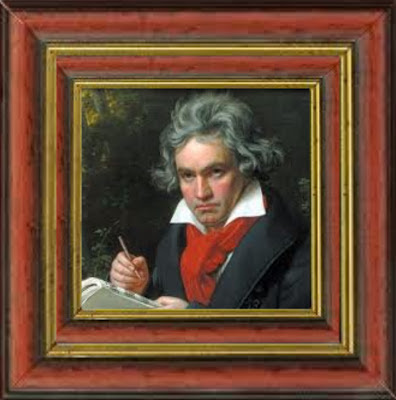The beginnings of the first piano concerto are also an example of his drive for perfection. He began the work as a sonata for two pianos, then began to revise it as a symphony. For whatever the reasons (as his new friend Joseph Joachim, the famous violinist and composer encouraged him) Brahms again converted the music, this time to a piano concerto.
Brahms doted on the score, refining and editing it over and over again. Brahms had heard Beethoven's 9th Symphony for the first time in 1854 and it had influenced him deeply. His drive to create a composition worthy of the tradition created by Beethoven and the other masters he revered while at the same time utilizing his progressive ideas made the work on the concerto last many years. Finally in 1859 Brahms played the premiere of the work with his friend Joachim at the podium. A few days after this performance it had its premiere at Leipzig with Brahms again at the piano but with a different conductor at the podium. The critics were harsh in their appraisal:
“This work … cannot give pleasure. Save its serious intention, it has nothing to offer but waste, barren dreariness,” said one critic, with another saying, “The work, with all its serious striving, its rejection of triviality, its skilled instrumentation, seemed difficult to understand, even dry, and in parts eminently fatiguing.” And it fared no better with the audience, especially at the Leipzig performance. Brahms described the scene in a letter to Joachim about the Leipzig performance:
“Nor reaction at all to the first and second movements. At the end, three pairs of hands tried slowly to clap, whereupon a clear hissing from all sides quickly put an end to any such demonstration … I am only experimenting and feeling my way, all the same, the hissing was rather too much."
I. Maestoso - The menacing and fierce trills that open this concerto are one of the most recognizable pieces of music in the repertoire. Brahms has begun the work with music that is brutally confident, sounds that grab our attention and are portents of things to come. From the treatment of themes to the entrance of the soloist, Brahms finds his own way from 'point A to point B', and manages to use the inspiration of Beethoven's ninth symphony to communicate his own ideas in his own way. Looking at this movement in an historical perspective, we can see just how innovative Brahms was. He was at 25 years old (and for all of his career) not only an upholder of tradition, but an innovator in ways that are not always apparent (or obvious) to the listener. His phrase structure, use of sonata form and rhythm, lead to a type of virtuosity that isn't always apparent (or obvious) either. It is a virtuosity that stresses the making of music, of expression, with very few purely technical fireworks. Everything works towards the musical whole.
II. Adagio - This movement is usually thought of as a tribute to the Schumanns, both Robert and Clara. Robert had died in an insane asylum in 1856 and Brahms always had deep feelings for Clara. Again, there is no mere display of pianism, but music that in turn is passionate, dramatic, rhapsodic. Near the end is a chain of trills for the piano that go up the keyboard that is resolved by the slow, gentle ending of the movement.
III.Rondo: Allegro non troppo - The piano begins with what always sounds to me like a foot-heavy dance, not really a peasant dance but not anywhere near a sophisticated one. The dreamy tune that endures brings a needed contrast. The orchestra plays through a short fugue that shows Brahms' already considerable contrapuntal skills. The rondo plays itself out until the cadenza, after which Brahms changes the mood to a 'maestoso' but unlike the dark and foreboding maestoso of the first movement this maestoso is bright, confident, jubilant, and marches its way to the end.














